Mastering Google Maps for Delivery Drivers
For delivery drivers, time is money. Inefficient routes and traffic delays directly impact profitability, increasing fuel costs and reducing productivity. Accurate and optimized directions are crucial, and understanding how to use Google Maps effectively is key to success. This includes finding the best directions to and from Google, as well as utilizing all its features to streamline the entire delivery process. Whether delivering packages, food, or other goods, effective use of Google Maps leads to faster delivery times and improved customer satisfaction. In today’s fast-paced logistics environment, basic navigation is insufficient. Leveraging the full capabilities of Google Maps allows drivers to make informed decisions, optimize their routes, and ultimately provide a superior service.
The Importance of Efficient Route Planning for Delivery Drivers
For delivery drivers, time directly translates to profitability. Every minute spent in traffic or taking inefficient routes results in higher fuel costs and lower productivity. Mastering Google Maps not only helps in getting accurate directions but also optimizes the entire delivery process. Whether you’re delivering packages, food, or other goods, understanding how to effectively use Google Maps can lead to significant improvements in delivery times and customer satisfaction.
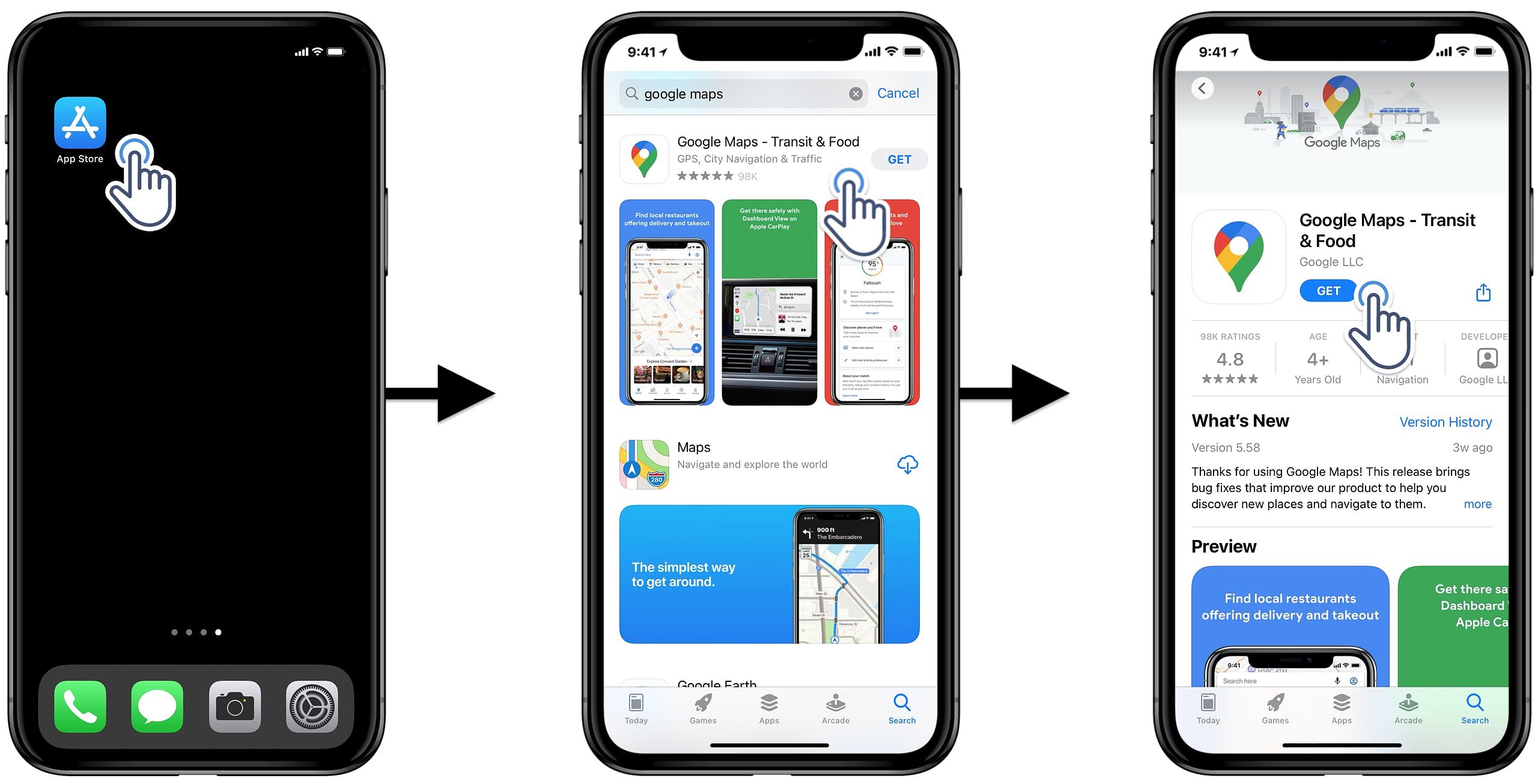
In an age where logistics and timely deliveries are crucial, relying solely on basic navigation features is no longer enough. By leveraging the full capabilities of Google Maps, drivers can streamline their operations, make informed decisions on the road, and ultimately deliver a better service to their customers.
Mastering Efficient Multi-Stop Routes with Google Maps for Optimal Directions to and from Google
Planning efficient multi-stop routes is essential for delivery drivers looking to optimize their “directions to and from Google.” Google Maps offers robust features that can help you maximize efficiency and minimize travel time.
Adding Multiple Destinations
To begin planning a multi-stop route in Google Maps, follow these straightforward steps:
- Open the Google Maps app on your device.
- Enter your first destination into the search bar.
- Tap the “+” icon to add additional stops.
- Continue adding addresses until you reach the limit of approximately 10 stops per route.
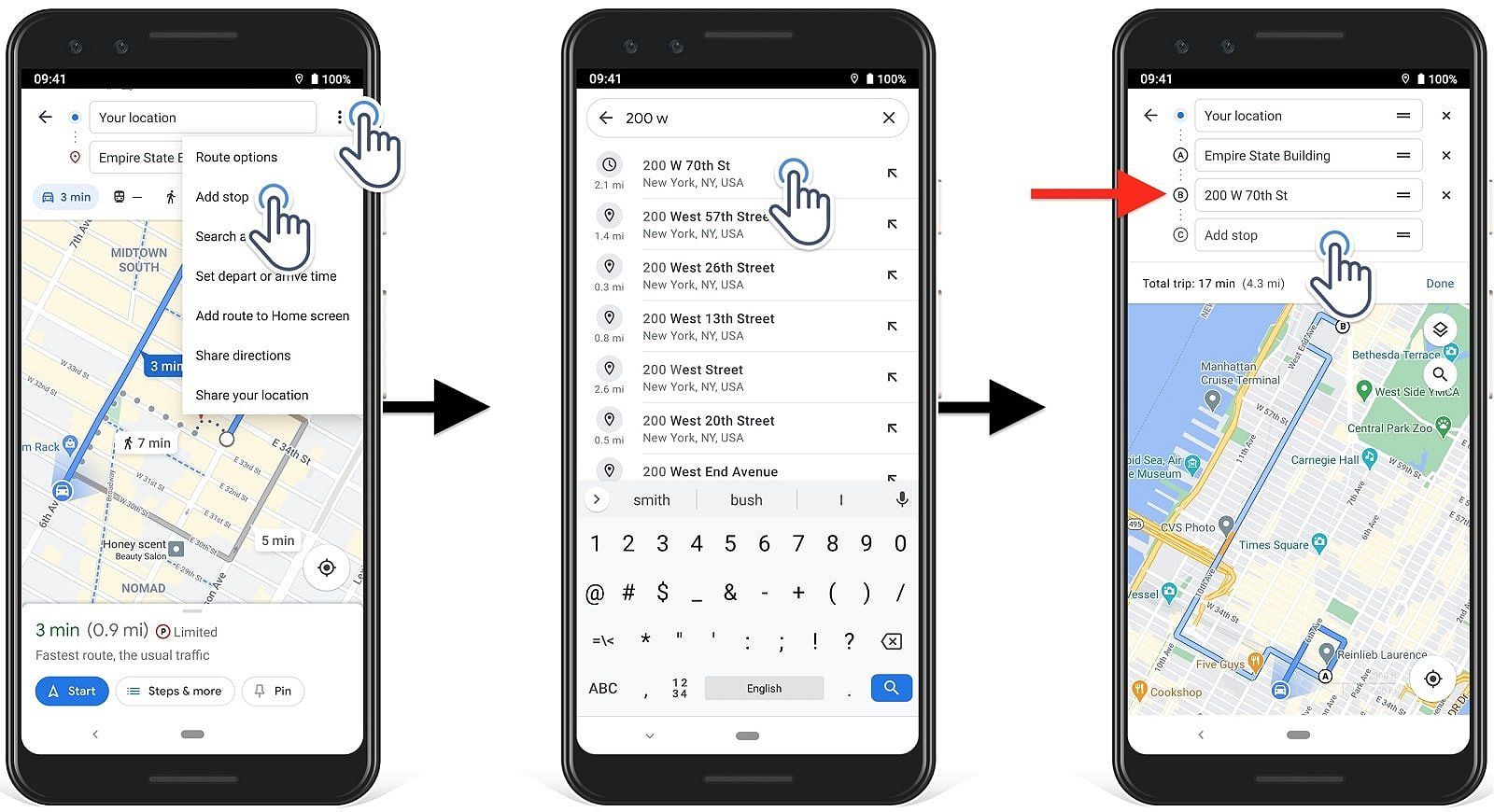
If your deliveries exceed 10 stops, consider splitting your routes into manageable sections to ensure efficiency. For example, if you have a delivery route that includes 15 stops, divide it into two routes, one with 10 stops and another with the remaining 5. This approach not only simplifies navigation but also allows you to plan more effectively.
Utilizing Google Maps’ Route Optimization Suggestions
While Google Maps doesn’t automatically optimize the order of your stops, it does offer route suggestions based on traffic and distance. Suppose you input stops A, B, C, and D. Google Maps, considering real-time traffic data showing congestion near B, might suggest the order A, D, C, B to avoid delays. By considering these intelligent recommendations, you can further enhance the efficiency of your multi-stop routes.
Optimizing Stop Order
In addition to leveraging Google Maps’ suggestions, you can also manually rearrange the order of your stops to enhance efficiency. Here are some tips for optimizing your stop sequence:
- Consider Traffic Patterns: Review traffic conditions at different times of the day to determine the best order for your stops. Use Google Maps’ traffic overlay to assess current congestion levels.
- Distance Between Stops: Aim to minimize the distance you need to travel between stops. Analyze the map to find the most efficient routes that connect your stops logically.
- Delivery Time Windows: Be mindful of your delivery deadlines and adjust the order accordingly. Prioritize time-sensitive deliveries to ensure they arrive on schedule.
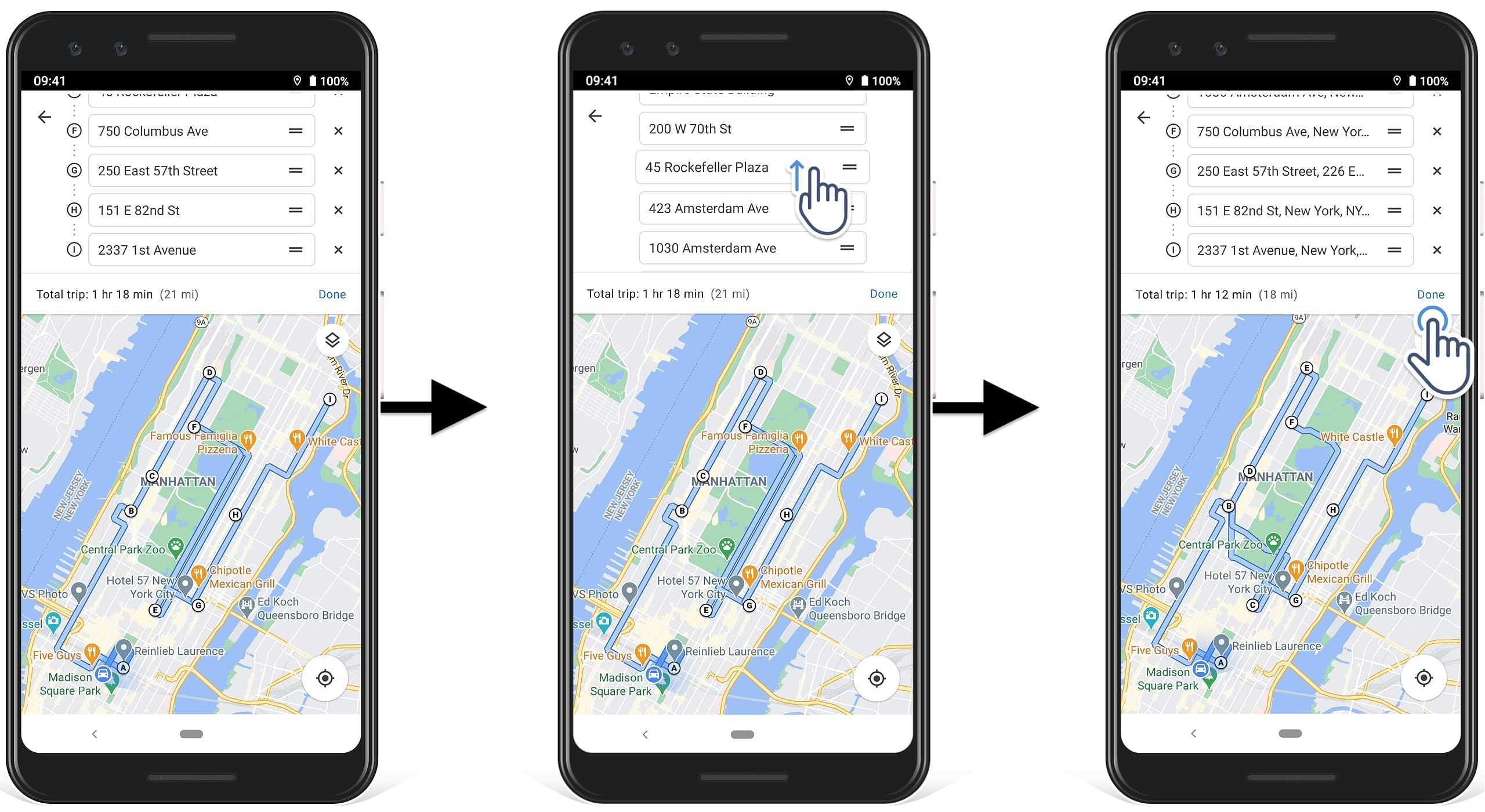
For example, if your unoptimized route takes 2 hours and 15 minutes covering 45 miles, rearranging the stops could reduce travel time to 1 hour and 50 minutes and distance to 38 miles. This not only saves time but also reduces fuel costs.
Counterarguments to Multi-Stop Route Optimization
It’s important to note that even with optimized routes, unforeseen circumstances such as accidents or unexpected road closures can significantly impact delivery times. Drivers need to be prepared to adapt their routes dynamically based on real-time conditions to ensure timely deliveries.
Using Google Maps for Time-Sensitive Deliveries
When handling time-sensitive deliveries, real-time updates from Google Maps can be invaluable. Here’s how to effectively use Google Maps for urgent deliveries:
- Check Traffic Conditions: Before you start your route, check for current traffic updates. Google Maps provides a live view of traffic conditions, allowing you to identify potential bottlenecks.
- Adjust Your Route as Needed: If you encounter a traffic jam or road closure, use Google Maps to find an alternate route quickly. The app can dynamically reroute you based on real-time traffic data, helping you avoid delays.
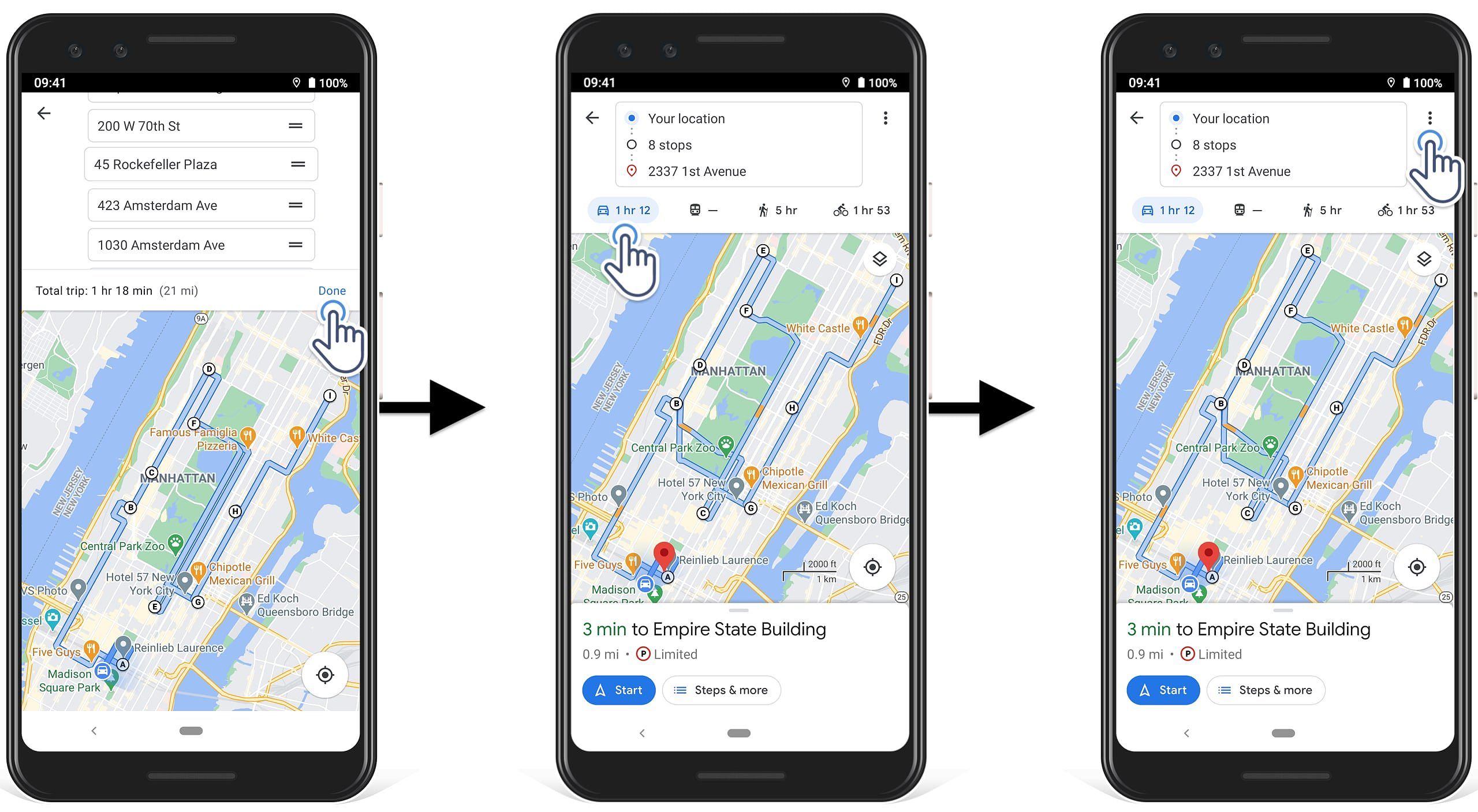
This flexibility allows you to adapt your delivery strategy on the fly, ensuring timely arrivals. For example, if you’re on your way to deliver a package and notice a major traffic incident on your planned route, Google Maps can suggest a faster alternative, thus helping you meet your delivery deadlines.
Leveraging Offline Maps for Seamless Navigation
Navigating in areas with poor connectivity can be challenging for delivery drivers. Offline maps in Google Maps serve as a reliable backup when you’re out of range.
Downloading Offline Maps
To download offline maps, follow these steps:
- Open the Google Maps app and tap your profile picture.
- Select “Offline maps.”
- Choose “Select your own map” and adjust the view to encompass the area you’ll be traveling in.
- Tap “Download.”
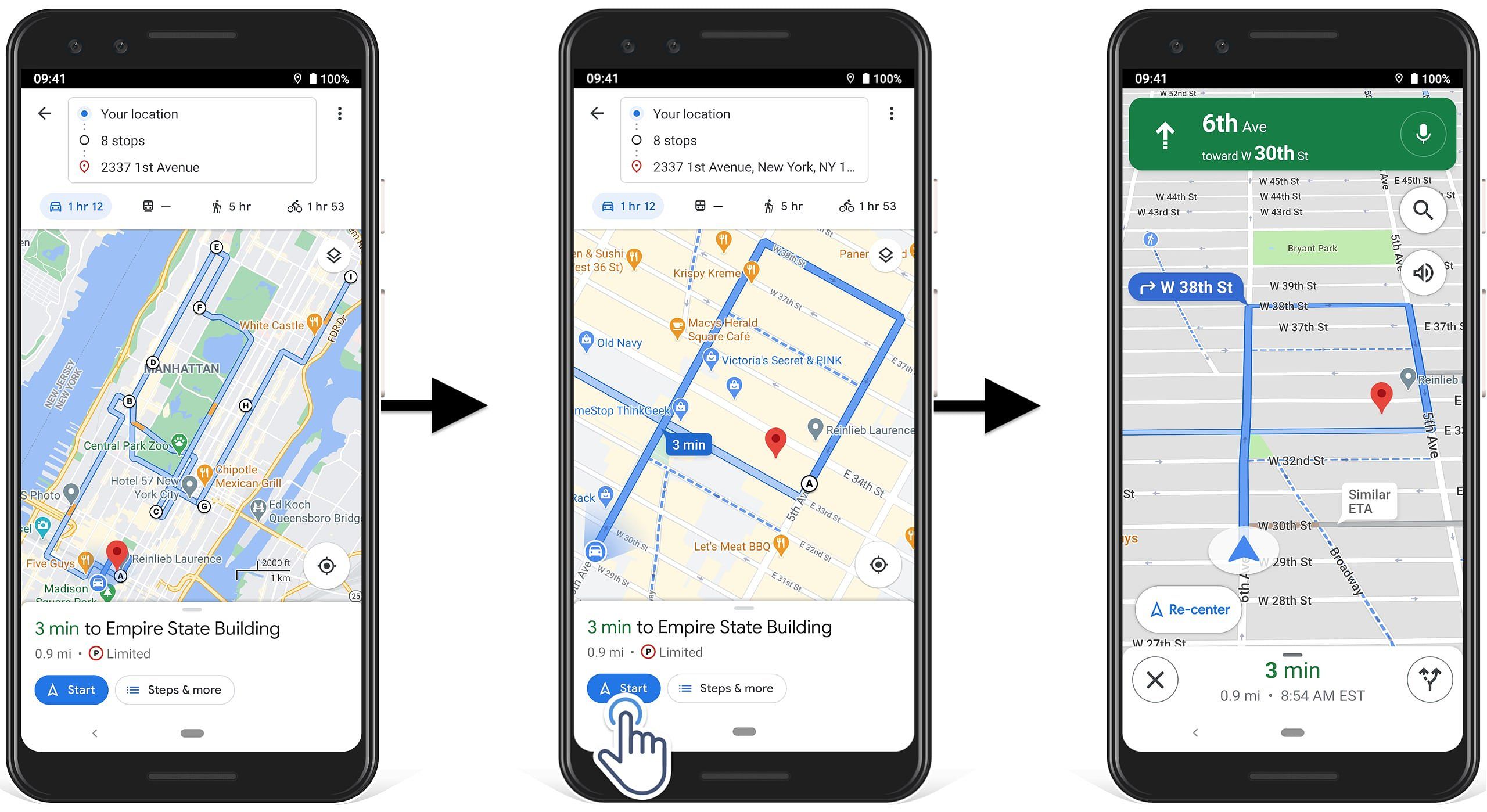
This functionality is especially useful when you know you’ll be delivering in remote areas where cellular service may be spotty. By downloading the necessary maps in advance, you can ensure that you won’t be left stranded without navigation.
Limitations of Offline Maps
While offline maps are useful, they come with limitations:
- No Real-Time Updates: Offline maps do not provide current traffic conditions or rerouting options. If there are unexpected road closures or accidents, you won’t be informed until you regain connectivity.
- Less Detail: The level of detail in offline maps may not match that of online maps. Features like business information, points of interest, and updated street layouts may not be available.
- Static Information: Offline maps are static and do not reflect changes to the road network that might have occurred since the map’s download. A newly constructed road or a major road closure won’t be reflected.
To mitigate these limitations, plan your routes ahead of time and allocate extra time in your schedule for potential issues. Additionally, monitor your device’s storage to ensure adequate space for the downloaded maps. It’s also wise to download maps for the areas you frequently deliver to, so you’re always prepared. Google regularly updates its map data, so periodically redownloading maps is recommended for optimal accuracy.
Counterargument to Offline Maps: While some dedicated GPS devices offer robust offline navigation, they often lack the breadth of information and real-time capabilities that Google Maps provides online.
Utilizing Advanced Google Maps Features for Delivery Drivers
Beyond basic routing, Google Maps offers advanced features that can significantly improve your delivery operations.
Voice Navigation
Voice navigation is essential for maintaining focus on the road. Here’s how to use it effectively:
- Turn on Voice Navigation: Ensure your device’s volume is adjusted so you can hear the directions clearly. You can also adjust the voice’s pitch and speed in the settings to suit your preferences.
- Customize Settings: Tailor the voice type and volume to your liking. This can enhance your driving experience, making navigation more comfortable.
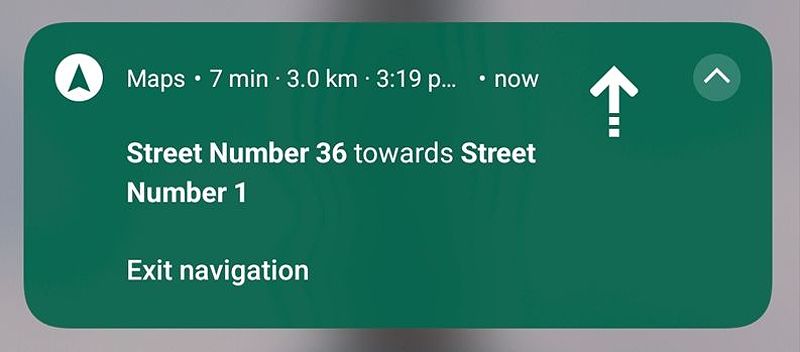
This hands-free navigation allows you to keep your attention on driving while still receiving turn-by-turn directions. It’s vital for safety, as you won’t need to look at your device constantly.
Sharing Routes with Others
If you’re part of a delivery team, sharing routes can enhance collaboration. To share your route:
- After planning your route, tap the “Share” option.
- Choose how you want to share (e.g., via text or email).
- Select the recipients from your contacts.
This feature improves coordination among team members, ensuring everyone is informed of the planned delivery routes. For instance, if one driver needs to cover for another, they can access the shared route and seamlessly continue the deliveries.
Real-Time Traffic Updates
Real-time traffic updates can help you navigate more effectively. To utilize this feature:
- Enable Traffic Layer: In the Google Maps app, turn on the traffic overlay to visualize current congestion. This feature provides a color-coded map indicating traffic flow, making it easy to spot delays.
- Adjust Your Route: If you see heavy traffic ahead, reroute to avoid delays. Google Maps will suggest alternate routes based on current traffic conditions, helping you save time.
This proactive approach can save you time and enhance customer satisfaction. For example, if you’re scheduled to deliver during rush hour, checking traffic beforehand can help you avoid the busiest routes.
Glanceable Directions
One of the newer features in Google Maps is glanceable directions. This allows you to view key navigation information directly on your smartphone’s lock screen. Here’s how it benefits delivery drivers:
- Improved Safety: Reduces the need to unlock your device while driving. This feature allows you to check directions at a glance without taking your eyes off the road for too long.
- Battery Preservation: Minimizes the time your screen is active, preserving battery life. This is particularly useful on long delivery days where battery life can be a concern.
Utilizing glanceable directions can streamline your delivery process and enhance safety. Always ensure that your phone is charged before heading out, especially if you’re relying on these features.
Integration with Third-Party Delivery Apps
Google Maps is increasingly integrated with popular delivery platforms, such as Uber Eats and DoorDash. This integration streamlines the process for drivers using these apps, providing a seamless experience. Drivers can access detailed directions, real-time traffic updates, and other navigation features directly within the delivery app, enhancing efficiency and reducing the need to switch between multiple applications.
Alternatives to Google Maps for Professional Delivery Route Optimization
While Google Maps is a powerful tool for personal navigation, it may not meet the needs of large-scale delivery operations. Dedicated route optimization software can offer advanced features tailored to the logistics industry.
Comparing Google Maps with Dedicated Route Optimization Software
Google Maps provides basic route planning capabilities, but it lacks specialized features that dedicated software like Route4Me offers. Here’s a comparison:
- Automated Route Optimization: Dedicated software can automatically optimize routes based on delivery windows, traffic conditions, and other factors. This can save time and improve delivery efficiency.
- Multi-Driver Management: Features for managing multiple drivers can streamline operations. Such software can assign routes to different drivers based on their availability and location.
- Advanced Reporting: In-depth reporting capabilities allow for better analysis of delivery performance. This data can help businesses identify inefficiencies and improve their operations.
For businesses managing extensive delivery operations or complex routing requirements, exploring dedicated route optimization solutions may be beneficial. While Google Maps is excellent for personal use, businesses often require more robust features to manage their logistics effectively.
Tips and Best Practices for Using Google Maps for Deliveries
To maximize the effectiveness of Google Maps for your delivery routes, consider these best practices:
- Keep the App Updated: Regular updates ensure access to the latest features and data. Google frequently rolls out updates that can enhance performance and user experience.
- Check Traffic Before You Go: Always verify traffic conditions before starting your route. Google Maps provides forecasts for traffic conditions based on historical data, helping you plan accordingly.
- Plan Ahead: Pre-plan your routes, especially during peak traffic times, to avoid delays. If possible, schedule your deliveries during off-peak hours to minimize time spent in traffic.
- Use the “Save” Feature: Save frequently used routes for quick access. This feature can be particularly useful for regular deliveries to the same locations.
- Optimize Stop Order: Use the “add stop” function efficiently, considering the best sequence for your deliveries. This not only saves time but also ensures that you’re not backtracking unnecessarily.
By following these tips, you can enhance your efficiency and ensure that your deliveries are completed on time.
Frequently Asked Questions
Q: Can Google Maps provide completely offline navigation?
A: No, while offline maps can be downloaded, they do not include real-time updates or dynamic rerouting. They serve as a backup for areas with limited connectivity.
Q: What happens if I lose internet during a delivery route?
A: If you’ve downloaded offline maps, Google Maps will continue navigation using that data. However, real-time updates and some features will be unavailable.
Q: Is there a limit to the number of stops I can add to a route?
A: Yes, Google Maps limits routes to about 10 stops. For more stops, you’ll need to split your routes or consider professional software that can handle larger numbers.
Q: How accurate are Google Maps’ estimated times?
A: The accuracy of Google Maps’ estimated travel times depends on various factors, including real-time traffic and road conditions. Always allow for some buffer time to account for unexpected delays.
Conclusion
Optimizing “directions to and from Google” is crucial for delivery drivers looking to enhance their operations and improve customer satisfaction. By mastering the advanced features of Google Maps, such as multi-stop routing, offline maps, and real-time updates, you can dramatically improve operational efficiency and adapt to changing conditions on the road.
While Google Maps is a powerful personal navigation tool, dedicated route optimization software may offer more specialized features for larger-scale delivery operations. However, for smaller businesses and individual drivers, leveraging the capabilities of Google Maps can still provide significant benefits.
By adhering to best practices and staying informed about the latest updates, delivery drivers can unlock the full potential of Google Maps and deliver a superior service to their customers. As the logistics industry continues to evolve, adaptability and the effective use of technology will be key to maintaining a competitive edge.
